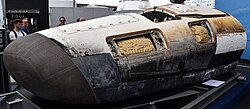Approach
FLPP addresses the problem that in many cases, promising new technologies for future launcher applications possess a low TRL. At this stage, an implementation of such a technology into a development programme poses a significant risk. If it turns out, that the technology does not perform as expected in the later stages of the development or the concept using that technology is not feasible, a redesign of the complete system often has severe impacts on time, quality and cost. [5]
FLPP addresses this issue via a system driven approach. Based on system studies for future launch systems or upgrades of current systems, promising technologies, which will provide benefits in line with the objectives of FLPP and have a low TRL (typically 2–3), are selected. These technologies are then developed to reach a TRL high enough (at least 5, typically 6) to allow their implementation into current or future development programmes with largely reduced risks. As technology maturation has already been performed in FLPP, the necessary time span to develop a new launcher is also reduced significantly. [5]
The approach to mature a technology in a demonstrator based on system studies largely reduces the impact of worse than anticipated performance (e.g. in weight, efficiency, complexity) compared to a launcher development, were often a large part of the launcher design is affected by a change in the characteristics of a subsystem. After this "high risk" maturation phase the technology can then be transferred to a launcher development. A major change in the anticipated characteristics of a technology during the course of a development is much less likely when already starting with a high TRL (i.e. TRL 6) as compared to a technology of low readiness. [5]
Demonstrators
To increase the technology readiness level to 6, a technology has to be tested in a model or prototype in a relevant environment. Performing this in a cost-effective way, one or several technologies are integrated into a demonstrator and tested in a relevant environment, considering such parameters as media, pressures and temperatures.
These demonstrators are based on requirements which are derived from current or future launch systems as well as general experience. The requirements are tailored to be representative of a launch system and provide the possibility to test the maximum attainable performance of the integrated technologies as well as safety margins.
The demonstrators usually represent a sub-system of the complete launcher, e.g. a tank, a stage structure or an engine. [5]
Collaboration
The projects performed by FLPP rely heavily on the collaboration with external partners. As the increase of TRL which is pursued is linked to the later application of the technology, these partners are usually industrial. If deemed beneficial, institutional partners or subcontractors will be chosen as well.
Coordination with other programmes
As a technology development programme for future launchers and upgrades to existing launchers, there is a close coordination between FLPP and the launcher development programmes for Ariane and Vega. Many of the technologies matured in FLPP are baselined for the configurations of Ariane 6 and Vega C.



